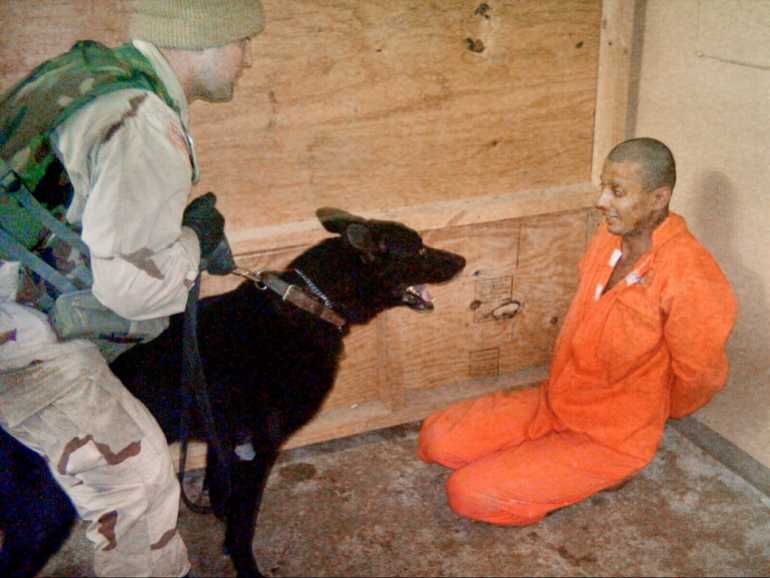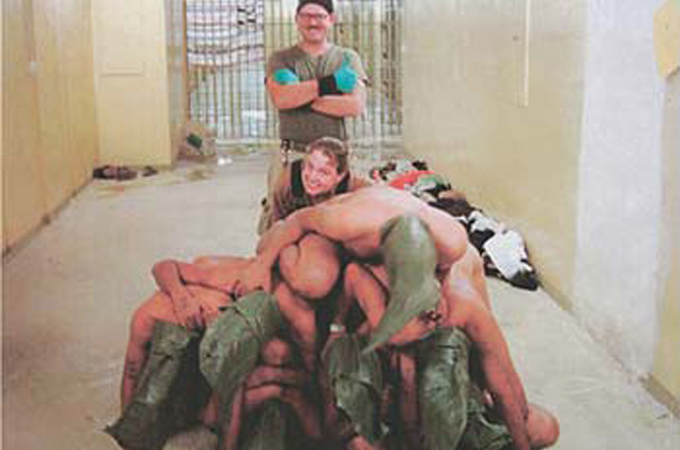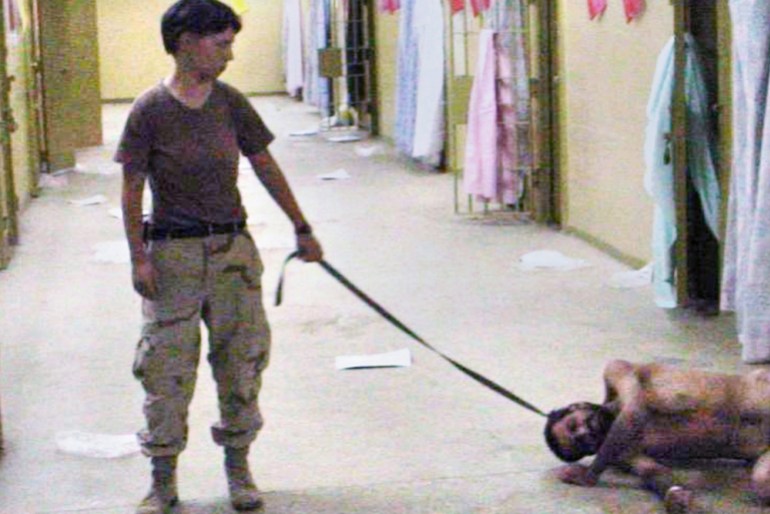A United States jury has ruled that Virginia-based defence contractor CACI must pay $42m to three Iraqi men who were tortured at the Abu Ghraib prison in 2004.
But what exactly was it and what happened there? What was the case about? Here’s what you need to know:
What was Abu Ghraib?
Abu Ghraib, a maximum security prison in Abu Ghraib, Iraq, was used by the US to “interrogate suspects” after it invaded Iraq.
Established in the 1950s, it was used by former President Saddam Hussein to hold political prisoners during his presidency from 1979 to 2003.
After the US invaded Iraq in 2003, overthrowing Hussein who was subsequently executed, Abu Ghraib was taken over by the US military.
In September 2006, Abu Ghraib was handed over to the Iraqis and in April 2014, it was closed.
Was there abuse and torture at Abu Ghraib?
Yes.
In 2003, photos of imprisoned Iraqis suffering abuse at the hands of US prison guards started to surface.
Like one of a hooded prisoner connected to electrical wires and forced to stand on a small box.
He had been told he would be electrocuted if he fell off the box.
The picture was of Ali Shallal al-Qaysi, who testified about it in 2005.
After he was no longer able to use his hand due to the torture, the American guards started calling him “Claw Man”.
Other images show prisoners forced into humiliating positions, sometimes with excrement smeared on them, while US prison guards posed, smiling, beside them.

Was anything done about the abusers?
Inquiries were launched in 2004 by now-retired US Major General Antonio Taguba and now-retired US Major General George Fay. Another investigation was launched in 2008 by the US Senate Committee on Armed Services.
These inquiries uncovered more about the abuse that took place at Abu Ghraib, which included sexual abuse, rape, and physical and psychological torture and resulted in the death of at least one inmate, Manadel al-Jamadi.
In the years that followed, 11 US soldiers were charged with dereliction of duty, maltreatment, aggravated assault and battery. They were convicted in military courts, and nine were sentenced to time in prison.

A civil lawsuit against CACI by four Iraqi prisoners who had been tortured at Abu Ghraib was filed in 2008 by the New York-based nonprofit Center for Constitutional Rights (CCR) on behalf of the plaintiffs.
The suit charged that CACI operatives had been providing “interrogation services” in Abu Ghraib.
What was the result of the US civil lawsuit?
A US federal jury ruled on Tuesday that CACI must pay three Iraqi civilian plaintiffs – Suhail Al Shimari, Salah Al-Ejaili and Asa’ad Al-Zubae – $3m each in compensatory damages and $11m each in punitive damages.
The fourth plaintiff, Taha Yaseen Arraq Rashid, was removed from the case in 2019 because he was abused before CACI was present at Abu Ghraib.
CACI signed a subcontracting agreement with the US government in 2003, receiving more than $19m for “interrogation services”.
The plaintiffs had been released without ever being charged with a crime, according to the CCR.

Who are the plaintiffs? What was done to them?
In November 2003, Al Jazeera Arabic cameraman Al-Ejaili was arrested by a US soldier while working on a story about an attack against US forces in Diyala – he ended up detained for months.
“The worst was the first day I arrived in Abu Ghraib, how they forced me to strip … naked in front of everyone,” Ejaili said.
“They placed a black hood on my head and left me hanging all night,” he said, adding that the Americans sang “Happy birthday, Al Jazeera” to him as he hung there. He was released after two months.
Al Shimari was in Abu Ghraib from 2003 to 2008, during which time, he said, he was threatened with dogs, electrocuted and forced to partake in physical activities while naked.
Al-Zubae was held from 2003 to 2004, during which he was tortured, including solitary confinement, sensory deprivation, and extremely hot and cold water.
What happened during the case?
CACI tried to have the case dismissed more than 20 times. Here is a timeline of other events:
- June 30, 2008: CCR files a lawsuit in a US federal court for Ohio on behalf of the three plaintiffs as well as Rashid.
- August 2008: Case is transferred to Virginia.
- February 27, 2019: Plaintiff Rashid is dropped because he was abused before CACI personnel arrived at Abu Ghraib.
- April 15, 2024: Trial begins – the first time victims of abuse at Abu Ghraib testify to a US jury.
- May 2, 2024: Jury fails to reach a unanimous verdict, the judge declares a mistrial.
- June 14, 2024: Judge grants the plaintiffs’ motion for a new trial.
- October 30, 2024: Retrial begins in federal court in Virginia.
- November 12, 2024: The jury finds CACI liable for its role in torturing the plaintiffs at Abu Ghraib.

Was this the only case of Abu Ghraib torture?
No.
In June 2004, initial complaints for a class-action suit on behalf of 256 Iraqi civilians tortured in Abu Ghraib were filed by CCR and other counsel.
Lead plaintiff Haidar Saleh, a Swedish citizen, was detained at Abu Ghraib twice – once by the Iraqi government before the US invasion of Iraq and once by US forces.
The defendants were CACI, US private contractor L-3 Services (formerly Titan Corporation), and Adel Nakhla, a former employee of Titan/L-3.
In June 2011, the US Supreme Court declined, without comment, to take up the case.
In June 2008, Wissam Al-Quraishi, and 71 others who said they had been tortured at Abu Ghraib and other prisons filed a case against L-3 Services and Nakhla.
In October 2012, a settlement was reached in that case, details of which have not been disclosed.
